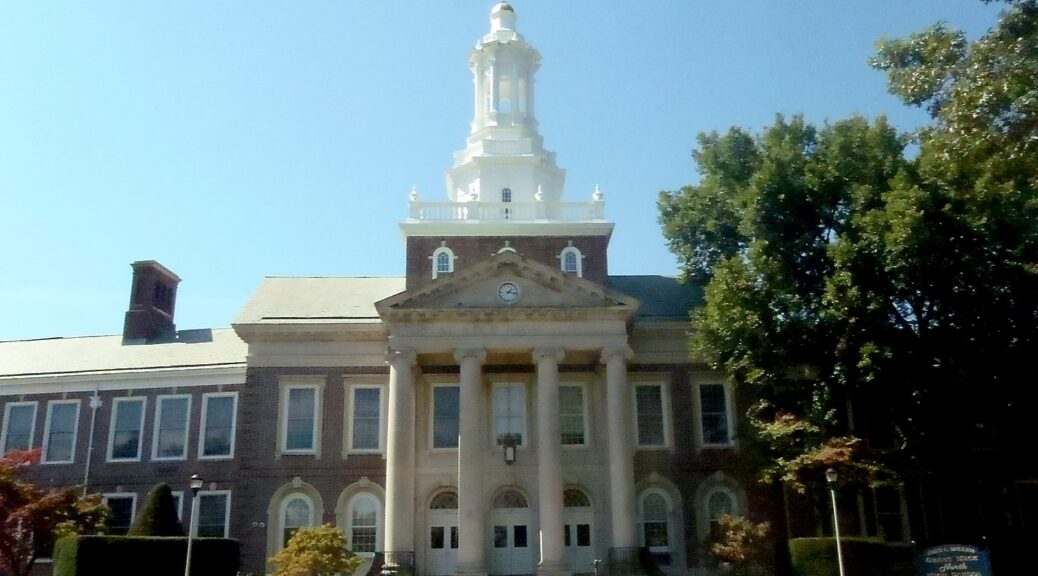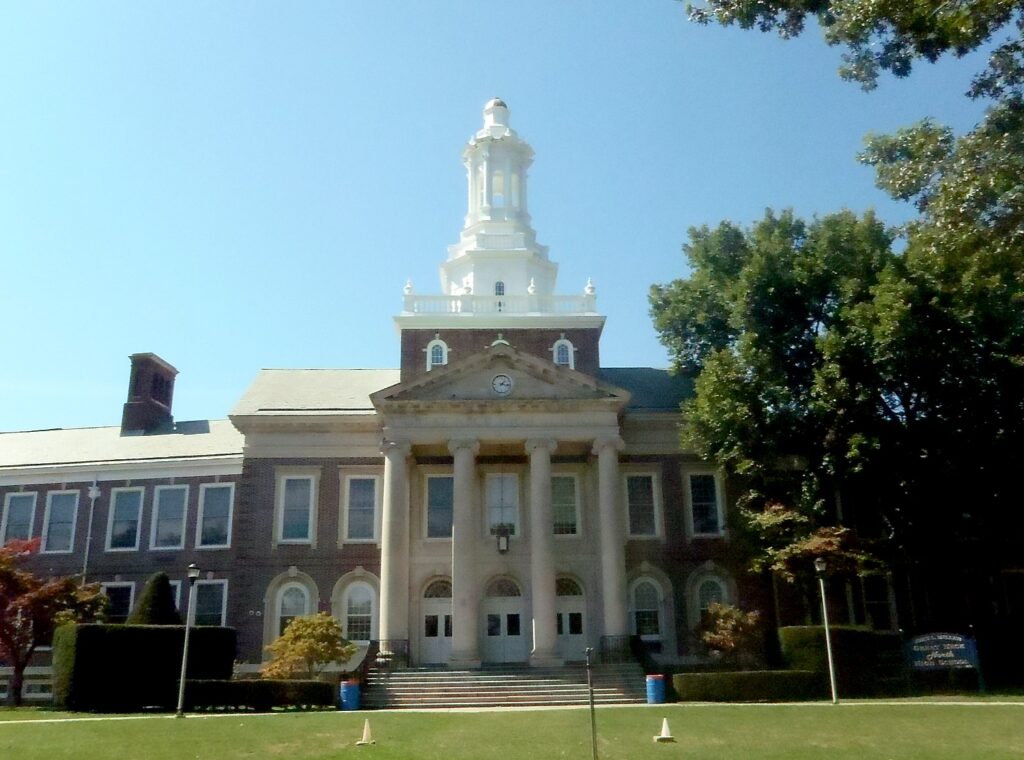
While rightwing MAGA extremists want to shut down universities, weaken public education, and impose their White Christian Nationalist curriculum (as Florida Governor Ron DeSantis has done) – banning books and rewriting curriculum to whitewash history – the Biden-Harris Administration recognizes public education “is the bedrock of our democracy and the foundation of opportunity in our country” and “every young person should have the chance to learn, grow and pursue their dreams.” The administration has worked to bolster academic achievement, particularly address learning losses that followed the coronavirus pandemic, and has made the single largest investment in K-12 education in history. This fact sheet, outlining additional actions the administration is taking to drive academic success for all students, was provided by the White House: – Karen Rubin/editor@news-photos-features.com
The Biden-Harris Administration believes that public education is the bedrock of our democracy and the foundation of opportunity in our country—and that every young person should have the chance to learn, grow, and pursue their dreams.
Since Day One, the Biden-Harris Administration has focused on improving academic achievement, increasing student attendance and engagement, and building communities where all students feel they belong and can thrive. That’s why the Biden-Harris Administration made the single-largest investment in K-12 education in history—and it is delivering results, including student achievement gains. A Harvard and Stanford study, for example, for example, examined outcomes in districts that received large amounts of federal COVID-19 relief funding, which ranged from approximately $4,000 to more than $13,000 per student, and found that these investments will pay for itself in increased earnings for students who benefit, with particularly large impacts for students in schools with high rates of poverty. These investments not only improve academic achievement, but other student outcomes. Another economic study shows that a 10% increase in per student spending each year for all 12 years of public school leads to about 7% higher wages in adulthood, with more pronounced effects for students from low-income backgrounds.
As students across the country head back to school, the Biden-Harris Administration is working to make sure America’s schools have the resources and supports they need to continue their important progress. Working together, at the federal, state, and local level, we must all double-down on strengthening reading and math skills; increasing student attendance and engagement; providing afterschool and expanded learning programs; and increasing access to intensive tutoring. We must also provide teachers and school leaders with evidence-based preparation, development, coaching, and resources to support student academic success and literacy and math and their overall well-being, which is foundational to that success.
As part of our ongoing commitment to support student success, today we are announcing the following Administration actions:
- Awarding $149 million to support states in implementing evidence-based reading interventions, including efforts to ensure every child is reading fluently by third grade. The U.S. Department of Education’s Comprehensive Literacy State Development grant program supports states in creating comprehensive literacy programs and providing professional development to advance literacy skills, including pre-literacy skills, reading, and writing, for children and youth, focusing on underserved students, including students from low-income backgrounds, English learners, and children with disabilities. For example, Ohio will partner with state colleges and universities to better prepare educators to deliver evidence-based literacy instruction, and Montana will use funds to expand reading instructional skills for educators in rural communities.
- Awarding $30 million to support comprehensive assessment systems that inform teaching and support learning. The U.S. Department of Education’s Competitive Grants for State Assessments program supports high-quality state assessment systems that measure student achievement and progress using multiple measures and gives insight into student learning, helping to inform instruction and support student achievement. For example, Nebraska will use funds to support English Learners by making assessment data more usable and actionable for educators as they design instruction. Issuing new school improvement guidance focused on evidence-based practices to support students and educators and accelerate academic achievement. To further support states and districts in their efforts to increase student success, the U.S. Department of Education is issuing school improvement guidance to support effective implementation of the Elementary and Secondary Education Act. The guidance provides examples of evidence-based approaches to support teaching and learning and drive student achievement. This includes addressing chronic absenteeism (for example, through early warning systems and improved family engagement, like home visits and effective parent communication such as texting), and providing high-quality tutoring (in small groups, 2-3 times per week by a well-prepared tutor, during the school day, and aligned with classroom instruction), and afterschool, expanded, and summer learning programs. This draft guidance is open for public comment until October 4, 2024. The Department will consider this community input and issue updated guidance by the end of the year.
Releasing a new resource for educators on evidence-based strategies for increasing student literacy and math achievement. The Institute of Education Sciences is releasing a resource for educators on instructional strategies for increasing student success in literacy and math. Each resource includes concrete practices that can be used by teachers from early grades to high school, and provides links to additional resources that can support learning at home. To support states, districts, schools, and families in addressing chronic absenteeism and increase student engagement, the Administration is: Calling on Governors and state education leaders to create statewide student data systems that provide chronic absenteeism-related data for all schools that are actionable, help target interventions, and drive improvement. The Administration encourages all state leaders to ensure that every school district in their state has the real-time data they need to identify and reduce chronic absenteeism and improve student success. States including Alabama, Connecticut, Indiana, and Rhode Island have developed innovative statewide student information systems to help increase student attendance. At a minimum, state systems are encouraged to provide:- to the public, up-to-date rates of chronic absenteeism and whether rates are declining or increasing;to educators, real-time, school-level data that enables them to identify the root causes of chronic absenteeism, select the appropriate interventions, target resources, and measure effectiveness; andto parents and families, real-time information on their child’s attendance.
- Providing parents with resources on navigating whether to send kids to school when they are experiencing health symptoms. The Centers for Disease Control and Prevention and external organizations are releasing resources on how to support consistent school attendance, while also preventing spread of illness.
- Awarding $30 million to support comprehensive assessment systems that inform teaching and support learning. The U.S. Department of Education’s Competitive Grants for State Assessments program supports high-quality state assessment systems that measure student achievement and progress using multiple measures and gives insight into student learning, helping to inform instruction and support student achievement. For example, Nebraska will use funds to support English Learners by making assessment data more usable and actionable for educators as they design instruction. Issuing new school improvement guidance focused on evidence-based practices to support students and educators and accelerate academic achievement. To further support states and districts in their efforts to increase student success, the U.S. Department of Education is issuing school improvement guidance to support effective implementation of the Elementary and Secondary Education Act. The guidance provides examples of evidence-based approaches to support teaching and learning and drive student achievement. This includes addressing chronic absenteeism (for example, through early warning systems and improved family engagement, like home visits and effective parent communication such as texting), and providing high-quality tutoring (in small groups, 2-3 times per week by a well-prepared tutor, during the school day, and aligned with classroom instruction), and afterschool, expanded, and summer learning programs. This draft guidance is open for public comment until October 4, 2024. The Department will consider this community input and issue updated guidance by the end of the year.
In addition to these actions by the Administration, a number of organizations have taken action to tackle absenteeism, as previewed during the White House Every Day Counts Summit. These actions include a messaging toolkit for states, districts, and educators based on new research around effectively communicating with parents to increase student attendance, developed by the Ad Council Research Institute (ACRI), with support from Overdeck Family Foundation, available on September 10th. Information on additional actions by organizations is available here.
These resources build on the previous Administration actions to promote academic achievement and student success, including:
- Securing $130 billion for the largest-ever investment in public education through state and district funding in the American Rescue Plan (ARP). ARP has been used to help schools safely reopen, and address the academic, mental health, and other needs of students. ARP funding has put more teachers in our classrooms and more support staff in our schools; expanded high-dosage tutoring; led to record expansion of summer and after-school programs; improved HVAC systems; and increased access to a wide range of student supports. The most recent data shows that states and districts have allocated more than $70 billion to activities that address students’ academic, social, and emotional needs, including tutoring, afterschool, and summer learning, and research is showing that these investments are working.
- Enabling states to continue investing pandemic relief funds into academic achievement efforts in the 2024-25 school year and focus remaining resources on improving outcomes. The Department issued a letter, Frequently Asked Questions, and a template to support States and provide a critical pathway to continue to use ARP dollars in the 2024-2025 school year, including on evidence-based academic and other student supports.
[i] The White House does not endorse any nonfederal entity, product, service, or publication. Links to websites and resources outside the U.S. Federal Government are being provided as a convenience and for informational purposes only; they do not constitute an endorsement or an approval by the White House of any of the products, services or opinions of the corporation or organization or individual. The White House bears no responsibility for the accuracy, legality or content of the external site or for that of subsequent links. Contact the external site for answers to questions regarding its content.




















